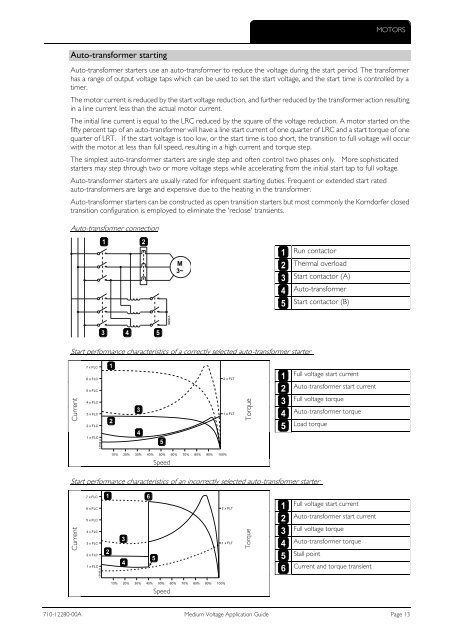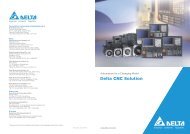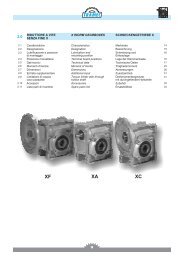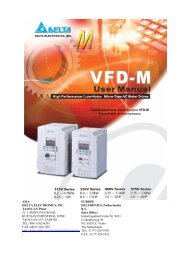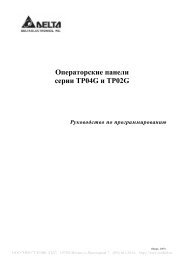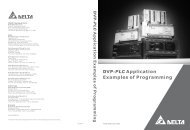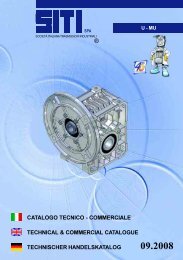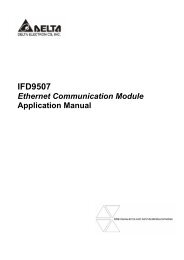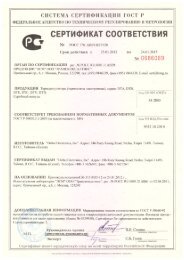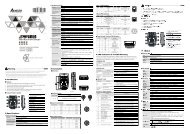Medium Voltage Application Guide
Medium Voltage Application Guide
Medium Voltage Application Guide
You also want an ePaper? Increase the reach of your titles
YUMPU automatically turns print PDFs into web optimized ePapers that Google loves.
13195.A<br />
Current<br />
Torque<br />
13194.A<br />
Current<br />
Torque<br />
09455.A<br />
MOTORS<br />
Auto-transformer starting<br />
Auto-transformer starters use an auto-transformer to reduce the voltage during the start period. The transformer<br />
has a range of output voltage taps which can be used to set the start voltage, and the start time is controlled by a<br />
timer.<br />
The motor current is reduced by the start voltage reduction, and further reduced by the transformer action resulting<br />
in a line current less than the actual motor current.<br />
The initial line current is equal to the LRC reduced by the square of the voltage reduction. A motor started on the<br />
fifty percent tap of an auto-transformer will have a line start current of one quarter of LRC and a start torque of one<br />
quarter of LRT. If the start voltage is too low, or the start time is too short, the transition to full voltage will occur<br />
with the motor at less than full speed, resulting in a high current and torque step.<br />
The simplest auto-transformer starters are single step and often control two phases only. More sophisticated<br />
starters may step through two or more voltage steps while accelerating from the initial start tap to full voltage.<br />
Auto-transformer starters are usually rated for infrequent starting duties. Frequent or extended start rated<br />
auto-transformers are large and expensive due to the heating in the transformer.<br />
Auto-transformer starters can be constructed as open transition starters but most commonly the Korndorfer closed<br />
transition configuration is employed to eliminate the 'reclose' transients.<br />
Auto-transformer connection<br />
Run contactor<br />
M<br />
3~<br />
Thermal overload<br />
Start contactor (A)<br />
Auto-transformer<br />
Start contactor (B)<br />
Start performance characteristics of a correctly selected auto-transformer starter<br />
7 x FLC<br />
6 x FLC<br />
5 x FLC<br />
4 x FLC<br />
3 x FLC<br />
2 x FLT<br />
1 x FLT<br />
Full voltage start current<br />
Auto-transformer start current<br />
Full voltage torque<br />
Auto-transformer torque<br />
2 x FLC<br />
Load torque<br />
1 x FLC<br />
10% 20% 30% 40% 50% 60% 70% 80% 90% 100%<br />
Speed<br />
Start performance characteristics of an incorrectly selected auto-transformer starter<br />
7 x FLC<br />
6 x FLC<br />
5 x FLC<br />
4 x FLC<br />
2 x FLT<br />
Full voltage start current<br />
Auto-transformer start current<br />
Full voltage torque<br />
3 x FLC<br />
2 x FLC<br />
1 x FLC<br />
1 x FLT<br />
Auto-transformer torque<br />
Stall point<br />
Current and torque transient<br />
10% 20% 30% 40% 50% 60% 70% 80% 90% 100%<br />
Speed<br />
710-12280-00A <strong>Medium</strong> <strong>Voltage</strong> <strong>Application</strong> <strong>Guide</strong> Page 13


